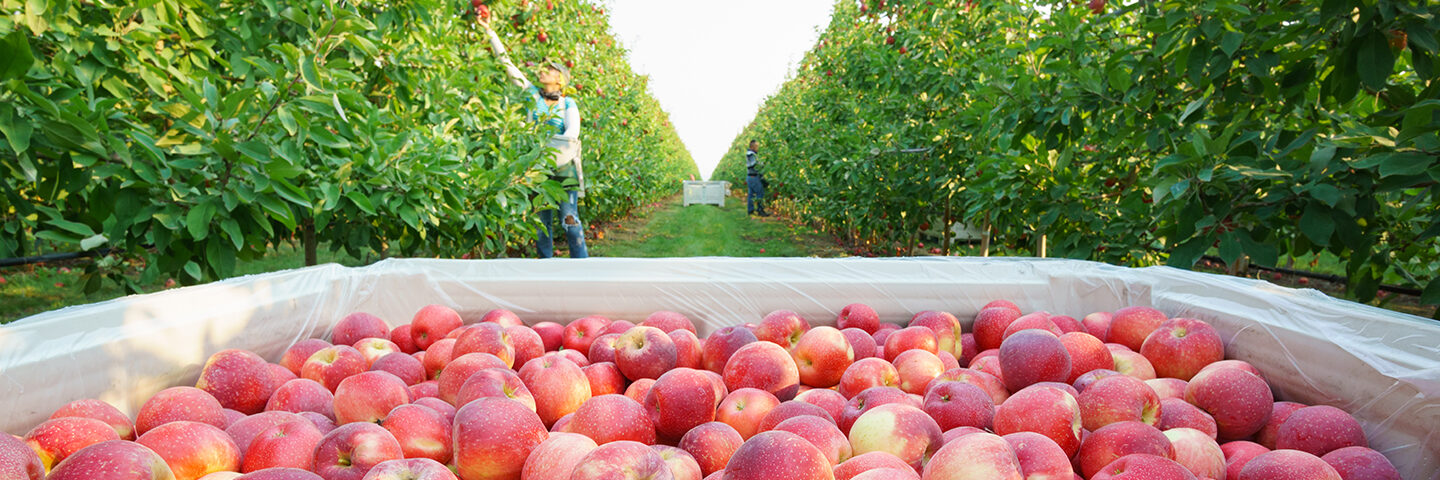
5 Apple Farming Secrets
October is National Apple Month and to kick-off this month-long celebration of one of our favorite fruits at Stemilt, we’re sharing some secrets! Apples are still hand-picked from the tree and rely on four true seasons to bear a crop. The big difference today is in the new technologies and practices that help growers efficiently care for apple trees, while also working to ensure they pick the highest quality crop each year.
1. Green waste is used to fertilize soils.
Tree branches and leaves, rotten fruit, yard clippings, and even crab shells and horse manure are used to create World Famous Compost at Stemilt. Not only does it feed the trees with valuable nutrients, but it also uses all of the green waste that the orchards and Stemilt packing facilities produce, keeping these compostable items out of landfills.
2. Computer software helps growers determine when to water an apple orchard.
Many of our orchards today have soil moisture monitors that automatically record the soil temperature and moisture levels at any given time to help growers make a decision on how and when to water their orchards. It’s smart irrigation and is essential to ensuring we only water when necessary.
3. Wind machines are used to control frost in orchards.
Growers carefully monitor the temperatures in their orchard during this time and if the temperature hits a critical point where buds or other plant tissues won’t survive, a grower will deploy a frost protection method. At our orchards this might mean turning on large wind machines or fans. The movement of air created by wind machines prevents stagnant cold air pockets from settling at the tree level and killing the apple blossoms that bear the crop. A single wind machine can protect up to 10 acres of orchards!
4. Stems are clipped on certain types of apples.
There are certain apple varieties that we grow at Stemilt that have long stems and if left unaltered, can puncture and cause damage to other apples around them. A crew member uses a simple tool to clip the stem down to a level where punctures won’t be an issue.
5. Color on some apple varieties is achieved with the help of Mother Nature and reflective material.
Because many of us buy apples with our eyes and look for good red color as a sign of maturity in apples, we line orchard rows with reflective film about two weeks before harvest. The film enhances color in apples by reflecting any sunlight from the ground back up into the shady parts of the tree. It is used to color many types of apples we grow at Stemilt, including Fuji apples, Pink Lady apples, Honeycrisp apples, Piñata apples, and Gala apples.


